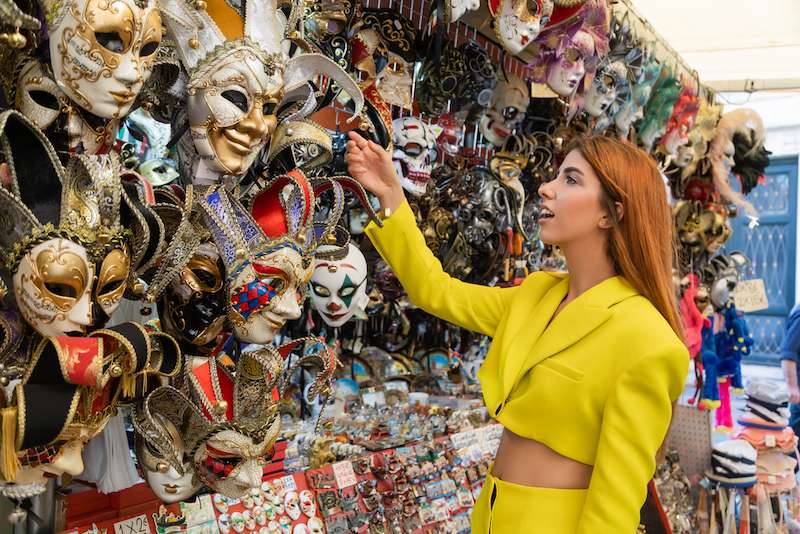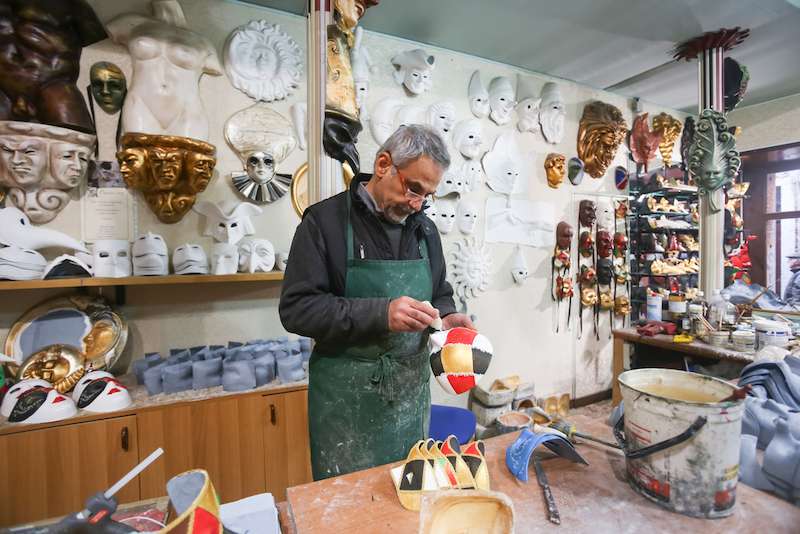Considered to be one of the most popular carnivals in the whole world, the Carnival of Venice is an ancient tradition that brings together both locals and tourists from all over the world. Filled with colorful costumes and events for over ten days, all leading up to Fat Tuesday, known in Italy as “Martedì Grasso”, the Carnival of Venice is mainly popular for its masks.
Let’s find out more about the history of these masks and how to make them!
Some history about Venetian Masks
The tradition to make masks for Carnival actually started in the XIII century, when Venetians used to celebrate Carnival from December 26th to Lent. They would wear costumes and masks to cover up their identity so that the lower, middle and upper classes could come together and have fun gambling and partying. Sometimes they
would also engage in clandestine affairs or assassinations!
Back in the day, Venetian masks were pretty simple but nowadays they have become more and more complex and they’re usually made with gesso and white paint and then decorated by hand with paint and natural feathers or gems.
Here’s a list of some of the most popular Venetian masks:
- BAUTA: This mask is considered to be one of the most important according to the Venetian tradition. Its name comes from the German “behüten” which means “to protect”. This mask has always been popular amongst Venetian citizens because it covers up most of your face, making it possible for you to hide your identity and social class. This mask also allows you to eat and drink easily and it’s nowadays very common as a souvenir;
- MORETTA: This mask, particularly loved by women because of its feminine features, was actually invented in France. It used to be worn by women when visiting convents, secured by a button held between teeth, symbolizing a vow of silence;
- VOLTO: Also known as the larva mask, this mask is always white and it’s considered to be one of the most comfortable ones to wear, given the fact that you can easily eat and drink with it.
- COLUMBINA: This mask was invented later on when an actress of Commedia dell’arte thought her face was too beautiful to cover it up completely, so they invented a half-mask and it’s now one of the most popular ones;
- PLAGUE DOCTOR: This mask was also invented later on but, at first, it was not for Carnival. It was, in fact, created by Charles de Lorme, a French doctor, to protect doctors from the Plague. It then became a Carnival Mask to commemorate mortality;
How to Create a Venetian mask in 7 easy steps
Making Venetian masks may look simple but it actually requires a lot of skills and technique.
Here’s a summary of the steps to create a Venetian mask:
- At first, a model of the mask is sculpted out of clay;
- Then, plaster mixed with water is poured on the clay sculpture;
- After circa 90 minutes, the plaster hardens and it’s time to create the mold, used to register the shape of the clay sculpture in reverse;
- The mold is then detached from the clay;
- The surface of the mold is then covered with layers of paper and then the mask is put on a heat source to dry;
- When the paper is finally dried out, which can take over 24 hours, the mask is extracted from the mold;
- The eyes are then opened from the mask and it’s decorated with acrylic paint;
Conclusion
The Carnival of Venice and its masks are a core element of Venice’s culture. Explore more about these traditions by checking out our other blogs and booking a Venice tour with us!



